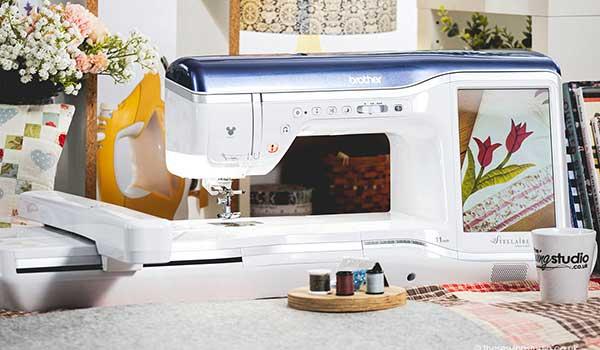Introduction
Creating professional-quality DST files is more than just converting images - it's an art form that combines technical precision with creative vision. While auto-digitizing tools can produce decent results, true mastery of DST digitizing allows you to create embroidery designs that stand out with perfect stitch placement, optimal thread flow, and impeccable finishing.
This guide will transform your approach to DST file creation by revealing:
-
The hidden settings professional digitizers use
-
How to prepare artwork for optimal digitizing
-
Advanced stitch sequencing techniques
-
Common pitfalls and how to avoid them
-
Workflows that save time while improving quality
Whether you're digitizing for personal projects or commercial production, these techniques will elevate your embroidery files from good to exceptional.
Understanding DST Files
Before creating DST files, it's crucial to understand what makes them special:
-
Tajima Origin: Developed for industrial Tajima machines
-
Stitch Precision: Contains exact needle movement data
-
Color Control: Embroidery machine color change commands
-
Compact Size: Efficient format for complex designs
-
Industry Standard: Expected by commercial shops
Professional Digitizing Workflow
1. Art Preparation (The Most Overlooked Step)
Professional Techniques:
-
Convert to high-contrast grayscale first
-
Simplify to 6-8 key colors maximum
-
Vectorize important edges
-
Mark key reference points
Tools Used:
-
Adobe Illustrator (for vector work)
-
Photoshop (for photo cleanup)
-
Lightbox (for hand-drawn elements)
2. Stitch Mapping
Pro Approach:
-
Identify stress points (corners, curves)
-
Plan stitch directions for optimal coverage
-
Mark underlay requirements
-
Sequence color changes logically
Common Mistake: Letting software auto-sequence without review
3. Underlay Strategy
Professional Underlay Formula:
| Fabric Type | Primary Underlay | Secondary Underlay | Edge Treatment |
|---|---|---|---|
| Woven Cotton | Zigzag (50% density) | Edge Run + Contour | 0.3mm extension |
| Stretch Knit | Double Zigzag | Edge Run + Parallel | 0.5mm extension |
| Thick Terry | High-density Zigzag | Contour + Parallel | 1.0mm extension |
4. Stitch Parameter Settings
Professional Defaults:
-
Fill Stitches: 0.4mm density (adjust ±0.05mm for fabric)
-
Satin Stitches: 0.35mm density
-
Running Stitches: 1.5-2.0mm length
-
Pull Compensation: 1.2mm (adjust based on test stitch)
Advanced Techniques
Creating Dimension
Layer Method:
-
Base layer (60° angle)
-
Contour layer (-60° angle)
-
Detail layer (follows natural contours)
Shadow Effect:
-
Offset duplicate layers by 0.3mm
-
Use darker thread for bottom layer
Perfect Corners
Professional Corner Technique:
-
Place anchor stitch at exact corner point
-
Shorten adjacent stitches by 30%
-
Add reinforcement underlay
-
Use manual stitch points if needed
Specialty Thread Effects
Metallic Thread Tips:
-
Increase stitch length by 20%
-
Reduce speed by 30%
-
Use larger needle (80/12 minimum)
Variegated Thread Tricks:
-
Plan stitch direction to showcase color transitions
-
Use longer stitches for more color variation
-
Avoid sharp direction changes
Software-Specific Tips
For Wilcom Users:
-
Utilize the "Stitch Painter" tool for natural media effects
-
Create custom stitch styles for frequent elements
-
Use the "Microstitch" feature for delicate details
For Hatch Embroidery:
-
Leverage the "Dynamic Split" function for complex fills
-
Save custom fabric presets for frequent materials
-
Use the "Stitch Simulator" to preview thread tension
For Embrilliance:
-
Create "Stitch Fonts" for consistent lettering
-
Use "Applique Tools" for perfect placement
-
Save "Design Recipes" for repeat projects
Quality Control Process
Professional Verification Steps:
-
Digital Check
-
Verify stitch count matches estimate
-
Check for missing elements in 3D view
-
Confirm color sequence
-
First Stitch-Out
-
Use actual project materials
-
Document tension settings
-
Measure dimensional accuracy
-
Wash Test
-
Launder according to care instructions
-
Check for distortion or loose stitches
-
Verify colorfastness
Common Mistakes to Avoid
Amateur Errors Professionals Never Make:
❌ Using uniform density throughout design
❌ Ignoring fabric characteristics in planning
❌ Skipping the test stitch process
❌ Over-digitizing small details
❌ Neglecting to optimize stitch sequence
Business Tips for Professional Digitizers
Pricing Strategies:
-
Charge by stitch count + complexity
-
Offer rush service at premium rate
-
Provide multiple file format options
Client Management:
-
Create detailed intake forms
-
Provide stitch-out samples for approval
-
Offer revision packages
Portfolio Building:
-
Show before/after transformations
-
Highlight specialty techniques
-
Demonstrate fabric adaptations
Continuing Education
Recommended Resources:
-
Books: "The Digitizer's Guide to Tajima DGML"
-
Courses: Wilcom Certification Program
-
Communities: DMX Embroidery Professionals Forum
Skill Development:
-
Monthly technique challenges
-
Master one fabric type at a time
-
Reverse-engineer premium designs
Conclusion
Mastering DST digitizing transforms you from a hobbyist to a true embroidery artist. While the learning curve may seem steep at first, each design brings new insights and refinements to your technique. Remember that even professionals continue learning - the field constantly evolves with new materials, threads, and software capabilities.
Start by implementing just one or two professional techniques from this guide in your next project. Notice how small adjustments in underlay, stitch direction, or density can dramatically improve your results. Over time, these professional practices will become second nature.
What professional technique will you try first? Share your experiences and questions in the comments below!
